9 minutos de lectura
¿Es segura la terapia de luz LED roja?
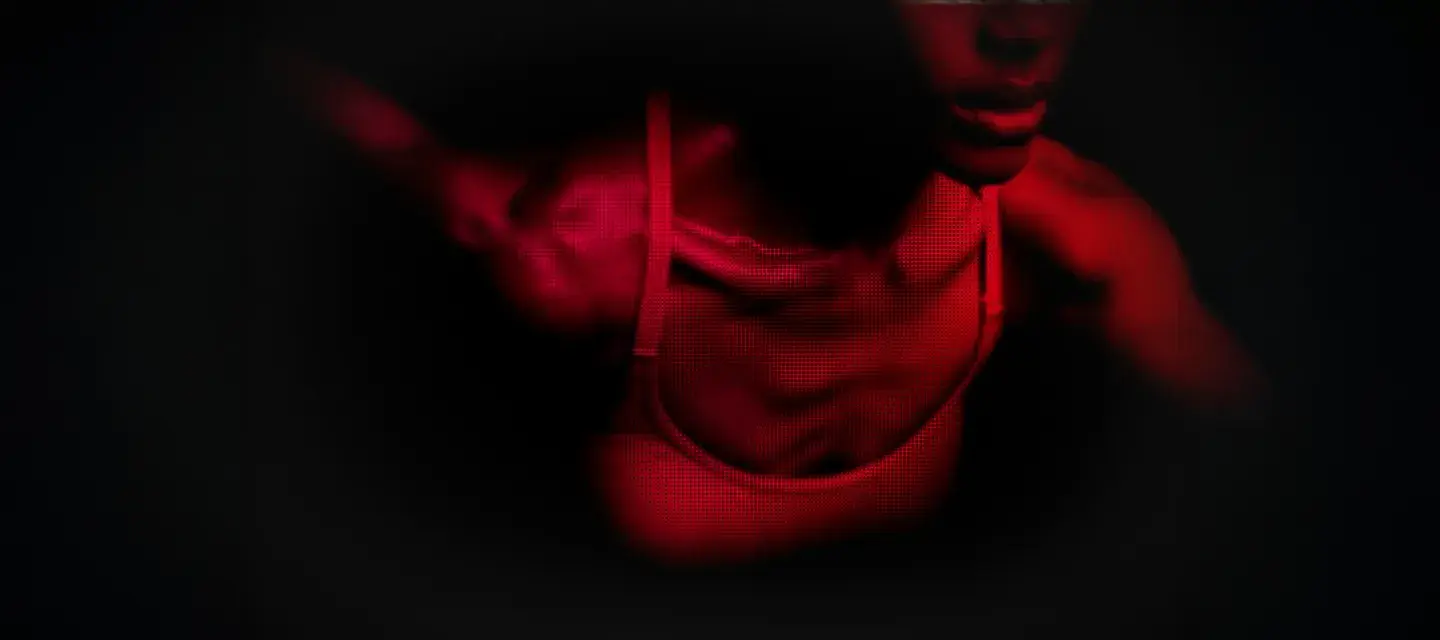
Ahora, unos 60 años después de los primeros experimentos con luz roja, la fotobiomodulación (una palabra técnica para usar longitudes de onda específicas de luz para estimular la reparación y regeneración celular) ya no es un lujo inalcanzable, ni un experimento peligroso al filo, ni un invento pseudocientífico de biohackers que promete piel radiante, curación y relax. La terapia de luz LED roja es un tratamiento no invasivo, indoloro y efectivo, bien investigado y disponible en distintas formas, tanto en ambientes profesionales como con dispositivos domésticos como dispositivos con luz LED roja, máscaras de LUZ led roja o paneles de luz LED roja. Muy alabada por su eficacia y resultados fiables para quienes buscan bienestar holístico y rejuvenecimiento, queda una pregunta irresistible: ¿Es segura la terapia de luz LED roja? Pero antes de llegar ahí, un breve repaso de cómo esta terapia llegó a la medicina y el cuidado de la piel.
¿Cómo acabó la terapia de luz roja en el mundo del cuidado de la piel?
Hubo un médico húngaro curioso en los años 60, Endre Mester en Budapest, que trabajaba con láseres de bajo nivel y vio que algunos ratones de laboratorio desarrollaban cáncer, así que decidió probar esa tecnología como posible tratamiento. Como suele pasar con los descubrimientos, las aplicaciones reales emergen de hipótesis fallidas. La luz no curó el cáncer, pero estimuló el crecimiento de pelo en las zonas afeitadas del lomo de los ratones. Hoy eso se reconoce como el origen de la fotobiomodulación (PBM) para promover la cicatrización, reducir la inflamación, apoyar la reparación de tejidos e incluso colaborar en la fertilidad.
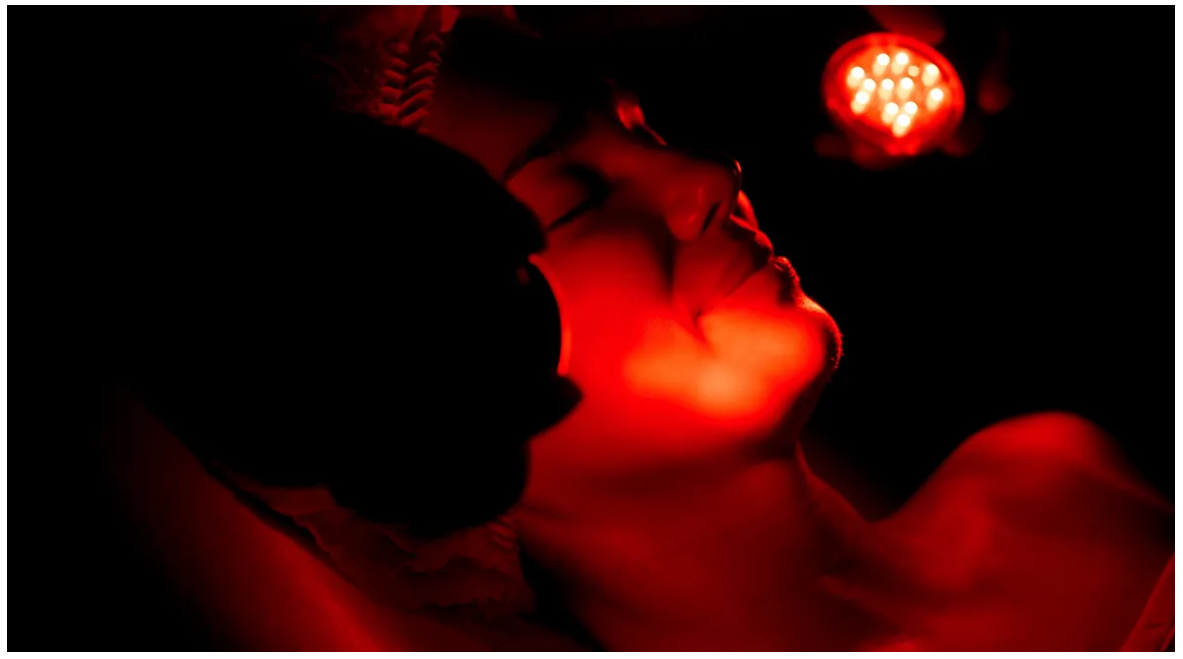
En los 90, la NASA se interesó por esta intervención prometedora, con vistas a hacer crecer plantas en el espacio y curar heridas lejos de los hospitales. Usando LEDs rojos, las semillas germinaron más rápido, las hojas crecieron más fuertes, y la vida encontró una vía incluso en el vacío espacial. Un experimento de botánica traspasó al ámbito médico.
Para mediados de los 2000, el “mundo espacial” ya era público y los científicos en Tierra empezaron a probar luz roja e infrarroja cercana en todo: heridas crónicas, dolor en articulaciones, inflamación, envejecimiento cutáneo. Lo que se estudiaba en laboratorios estériles y hospitales se filtró al mundo de la belleza, que vio la oportunidad de crear toda una rama antiedad no invasiva: piel más suave, colágeno regenerado, brillo juvenil — sin dolor, sin incisiones, sin químicos agresivos, sin agujas, sin tiempo de recuperación. Las primeras máquinas voluminosas aparecieron en las consultas dermatológicas; luego llegaron a spas elegantes; y ahora estamos en la era de dispositivos de mano, máscaras y paneles que podemos usar fácilmente en casa. Estas innovaciones nacieron de una misión para curar cáncer y cultivar plantas en el espacio.
¿Cómo funciona la terapia de luz roja?
¿Qué es la terapia de luz LED roja? También llamada RLT, terapia láser de bajo nivel, fotobiomodulación o biostimulación, utiliza luz LED roja o infrarroja cercana (generalmente entre 630 y 830 nm) para estimular la energía celular y promover la reparación de tejidos. A diferencia de la luz ultravioleta, no daña tu ADN. Es la versión curativa y suave de la luz solar: ofrece sus beneficios sin la radiación mutagénica dañina.
Para entender su efecto en la célula, imagina que la célula es una pequeña planta de energía, con estaciones internas que producen energía: las mitocondrias. Estas generan ATP (adenosín trifosfato). Tu vida depende tanto de esa molécula que, si su producción cesa, morirías en minutos. Muchas cosas —la edad, el estrés, lesiones, químicos— pueden bajar la producción de ATP, lo que tiene efectos en todo el cuerpo: piel que envejece, fatiga crónica, disfunción orgánica, etc.
Entonces, ¿cómo ayuda la luz LED roja a la célula? Dentro de la mitocondria actúa una enzima llamada citocromo c oxidasa (CCO), parte del proceso de producción de ATP. Los fotones de luz roja o infrarroja son absorbidos por esa enzima como si fuese un panel solar. Si hay óxido nítrico acumulado, puede bloquear la enzima. La luz roja libera ese bloqueo, permitiendo que entre oxígeno y se reactive el proceso de producción de ATP.
Con oxígeno restaurado y la enzima desbloqueada, la mitocondria produce más ATP, lo que le da más energía a la célula para reparar, crecer y funcionar óptimamente. En la práctica, esto significa más rapidez en la cicatrización, menos inflamación, mejor circulación y acción contra especies reactivas de oxígeno (ROS), reduciendo el estrés oxidativo. Es por eso que vemos mejoras visibles en manchas, rejuvenecimiento de la piel, recuperación muscular, alivio del dolor articular e incluso en el crecimiento del pelo: las células vuelven a mandar señales para producir factores de crecimiento y colágeno. Eso es lo esencial. Ahora vamos a la pregunta principal: la seguridad de la terapia de luz roja.
Seguridad de la terapia de luz LED roja
Con todo esto claro, puede que sigas dudando y preguntándote: ¿es segura? Sí: usada según las indicaciones y en dosis recomendadas, se considera generalmente segura y no tóxica. Y no conlleva el riesgo de cáncer que tiene la luz UV.
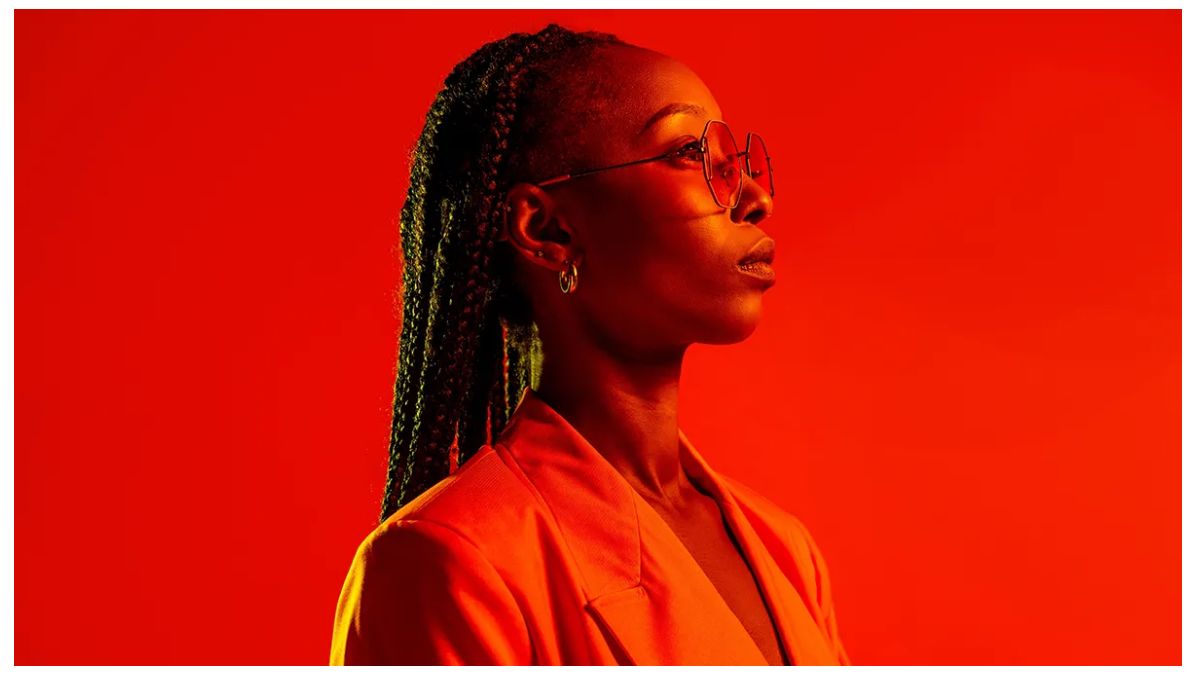
Pero ojo: que sea segura en un uso apropiado no quiere decir que no pueda hacer daño si se usa mal. Un uso excesivo —en distancia, tiempo o sin protección ocular cuando se exige— podría provocar irritación, enrojecimiento, ampollas o molestias oculares. ¿Y los efectos a largo plazo de un uso constante? Eso todavía no lo sabemos con certeza; hacen falta más estudios, especialmente dentro del contexto de rutinas cutáneas con luz roja.
Perspectivas médicas y científicas
Una pregunta importante: ¿puede la terapia de luz roja provocar cáncer? Ya dijimos que no hay radiación UV en RLT, por lo que no induce mutaciones. No: la terapia de luz roja no causa cáncer. De hecho, se investiga su uso para recuperación post‑cáncer no invasiva. Revisiones profesionales extensas, incluidas revisiones sistemáticas en oncología, confirman que los pacientes oncológicos no tienen por qué evitar la terapia de luz roja.
Luz roja frente a otras terapias de luz
- Luz roja vs infrarroja cercana:
Ambas suelen agruparse bajo red light therapy, pero distintas longitudes de onda penetran diferente.- Luz roja (600–700 nm): actúa en la superficie → beneficios para la piel.
- Infrarrojo cercano (700–900+ nm): penetra más profundo → músculos, articulaciones, cerebro.
- Luz roja vs luz azul:
La luz roja completa (roja + infrarroja cercana) combina beneficios superficiales y profundos.
La luz azul actúa en la superficie y tiene efecto antibacteriana, por lo que se usa a veces para acné. Pero puede generar radicales libres, así que conviene usarla junto con antioxidantes, filtros o con luz roja. - Luz roja vs fototerapia de espectro completo:
La fototerapia de espectro completo imita la luz solar (incluyendo UV, visible e infrarroja), y se utiliza para tratar trastornos como el SAD, psoriasis, eccema, dermatitis atópica o alteraciones del ritmo circadiano. Como incluye UV, tiene riesgos: daño en la piel, fatiga, ojos secos, dolores de cabeza, etc.
Seguridad en grupos específicos
- Embarazo:
Algunos estudios pequeños sugieren que es generalmente segura si se evita el abdomen. Pero lo más prudente es consultar con el médico (ginecólogo) antes de usarla de cuerpo completo. - Pacientes con cáncer:
No se han detectado contraindicaciones claras: la PBM no muestra que impulse el crecimiento tumoral, y algunas longitudes de onda podrían incluso ayudar con la recuperación de tejidos tras cirugía o tratamientos. Aun así, no empieces sin hablar con tu oncólogo. - Fotosensibilidad:
La fotosensibilidad (sensibilidad excesiva a la luz) puede aparecer por enfermedades autoinmunes, medicación o condiciones genéticas como el lupus o la porfiria. La respuesta a la fotobiomodulación es ambigua: puede tener beneficios terapéuticos, pero también puede desencadenar brotes, erupciones o reacciones más serias.
Preguntas rápidas
- ¿Cuáles son los efectos secundarios?
Normalmente leves: enrojecimiento, calor, ligera irritación. En raras ocasiones ampollas o fatiga ocular si se usa incorrectamente. - ¿Quién no debería usarla?
Personas con piel fotosensible, que estén en tratamientos fotosensibilizantes, con cáncer de piel activo, problemas oculares o embarazadas (sin supervisión médica). - ¿Puedo usarla si he tenido cáncer?
Sí — no hay evidencia de que la empeore. Pero hazlo bajo supervisión médica. - ¿Puede quemar la piel?
En casos raros, si la intensidad es muy alta o el uso prolongado; sigue siempre las instrucciones y protege los ojos si el dispositivo lo exige. - ¿Puedo usarla cada día?
Sí, si tu dispositivo lo permite. Pero siempre sigue las instrucciones del fabricante.
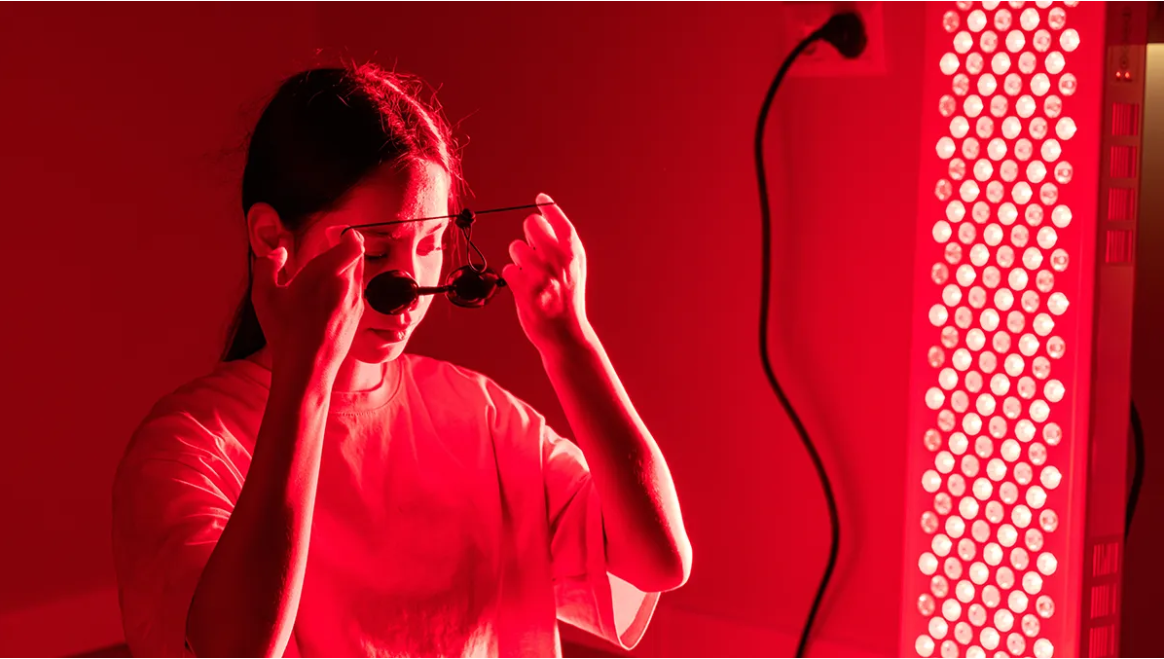
Conclusión
Entonces, al final del día: ¿es segura la terapia de luz roja? Sí — con sentido común y moderación, es lo más seguro y eficaz que hay dentro de las intervenciones de bienestar no invasivas. Lo que empezó con ratones pelados de un científico húngaro y con jardines espaciales de la NASA ha llegado ahora a nuestros hogares como máscaras LED y paneles de luz LED roja elegantes que prometen revitalizar la piel y animar tus células.
La ciencia lo respalda: decenas de estudios y revisiones sistemáticas publicadas por autoridades del sector, como la Cleveland Clinic y la AAD, muestran que la luz roja e infrarroja cercana no conlleva riesgos para el ADN, no provoca cáncer y de hecho puede apoyar la cicatrización, reducir inflamaciones y estimular la producción de colágeno. Los efectos secundarios son inexistentes o muy raros cuando se usa correctamente. Las pocas salvedades: el uso excesivo puede irritar la piel, las personas fotosensibles pueden tener reacciones imprevisibles, y aún necesitamos más estudios a largo plazo para entender el efecto acumulativo del uso prolongado.
No es magia, no es ciencia no verificada, y no te transformará automáticamente en un biohacker brillante del día a la noche — pero sí puede dar a tus células un empujón de reparación, restaurar y renovar.
Como casi todo lo bueno en la vida, no se trata de perseguir extremos sino de buscar equilibrio, constancia y saber cuándo es suficiente. Así que sigue las instrucciones, disfruta de las terapias, mantente curiosa, mantente bella… y disfruta viviendo en tu piel maravillosa.
If you, just as I, are not a biohacker, have no independent income source, or a recently deceased wealthy relative, you’ve probably looked at extremes that the truly dedicated ones put their bodies through as you chewed your non-organic cookie and thought they were sort of bonkers indeed. Or have you cursed the lack of character and willpower that’s required to disregard all comfort and sit in a tub of ice for a while? You’ve seen those people dedicatedly perched in front of red light panels, glowing with an otherworldly aura, as if they’ve got their lives together and are willing to invest in the best for themselves.
Now, about 60 years from the first red light therapy experiments, photobiomodulation (a fancy long word for using specific wavelengths of light to stimulate cellular repair and regeneration) is not an unattainable luxury, a dangerous walking on the edge, or a pseudo-science biohacking mambo-jumbo promising radiant skin, healing, and relaxation. Red light therapy is a non-invasive, painless, and effective treatment that is well-researched and available in various forms, including professional settings and at-home red light devices such as red light therapy wands, red light masks, and red light therapy panels. Highly touted for its efficacy and reliable results for those who want holistic wellbeing and rejuvenation, one question tickles the top of our tongues: Is red light therapy safe? But, before we go there, here’s a quick intro on how red light therapy (RLT) finally ended up in medicine and skincare, which you can totally skip if red light therapy dangers for certain populations are all you care about.
How red light therapy ended up in skincare?
There was this curious Hungarian physician in the 1960s, Endre Mester in Budapest, who saw low-level lasers and had some lab rats growing cancer, so he decided to test the technology as a possible treatment. As is often the case with discoveries, real applications usually emerge from false hypotheses. The light didn’t cure cancer, but it did regrow the hair on the shaved spots on the rat’s back. This is now acknowledged as the birth of photobiomodulation (PBM) to promote wound healing, reduce inflammation, support tissue repair, and even aid in fertility.
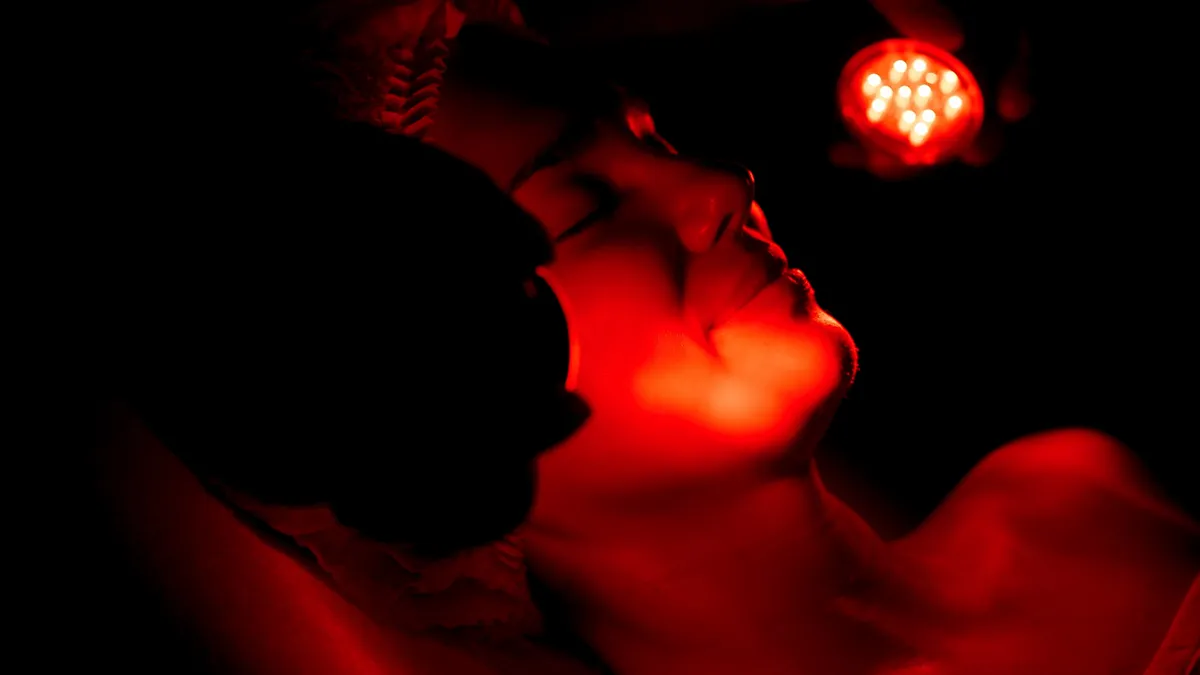
In the 1990s, NASA took an interest in this undervalued, promising intervention for growing plants in space and healing wounds far far above the first hospital. By using red LEDs, seeds germinated faster, leaves grew stronger, and life found a way in the vacuum of space. A botany experiment crossed into the medical field.
By the mid-2000s, the space-word was out and earth-bound scientists began testing red and near-infrared light on everything from chronic wounds to joint pain, inflammation, and skin aging. Sterile labs and hospital rooms conclusions leaked into the beauty industry, which saw its chance to create an entire new branch of non-invasive anti-aging routine promising smoother skin, collagen revival, and a youthful glow - No pain, no incision, no chemicals peeling off layers of skin, no needles, no downtime. The first bulky machines appeared in dermatologists' offices; they moved into classy spas, and now we’re in the era of handheld devices, masks, and red light panels that we can easily use at home. These innovations were born from a mission to cure cancer and grow lettuce in space.
How Does Red Light Therapy Work
What is red light therapy? Also known as RLT, low-level laser light therapy, photobiomodulation, or biostimulation, red light therapy utilizes low-level red or near-infrared light (typically with wavelengths of 630–830 nm) to stimulate cellular energy and promote tissue repair. Unlike UV light, it doesn’t damage your DNA. It is the sunlight’s softer, healing cousin, delivering all of the goodness minus the harmful, mutating radiation.
The best way to grasp the effect of red light on the cell is perhaps to imagine the cell as tiny power plants with workstations to produce energy inside – the mitochondria. These generate ATP (adenosine triphosphate). You need ATP so bad that you’d leave this world in seconds or minutes if its production stopped ,as you use this molecule for basically all cellular functions. Lowered ATP production due to aging, stress, injury, lifestyle, chemicals, or any other interference has wide systemic effects – from aging skin and chronic fatigue, to organ failure and death (BTW, that’s how cyanide works).
But how does red light therapy help the cell produce more ATP and therefore function better? Within the mitochondria, there’s an enzyme called cytochrome c oxidase (CCO), which is a part of the electron transport chain and oxidative phosphorylation that produces ATP from nuregrowtrients and oxygen. Red and near-infrared light photons are absorbed by CCO like a solar panel charging.
If your mitochondria have built up some nitric oxide (NO) – which is actually very useful for vasodilation and great for the heart and quality erections – it can block CCO from doing its job. Red light frees the enzymes and allows the needed amount of oxygen to enter the chain again.
With oxygen restored and the CCO unblocked, mitochondria produce more ATP, meaning the cell has more energy to repair, grow, and function optimally. Concretely, this means faster wound healing, reduced inflammation, improved circulation, and dealing with reactive oxygen species (ROS) to reduce oxidative stress. The reason why we see visible improvements in dark spots, skin rejuvenation, muscle recovery, joint pain, and even hair regrowth is that once-again-highly-functional cell signals for more growth factors and collagen synthesis. This is the gist of it for the scientifically more inclined. Now onto the main question of red light therapy safety.
Safety of Red Light Therapy
So, now you know all of these basics, but are still on the fence, worrying if red light therapy is safe, we’ll try to be as clear as possible. Yes, when used as directed and in prescribed doses, it’s generally considered safe and non-toxic, and it doesn’t come with the increased cancer risk of UV light.

Still, just because red light therapy is safe in general does not mean that something so potent to change the energetic output of the mitochondria can also do harm when misused. Unless we live in the mind experiment of Flatland, there is always the other side of things. Misuse—like overuse of the lights (be it in distance from body, length of use, or skipping eye protection) could lead to irritation, red skin, blistering, or eye irritation. What about the long-term effects of consistent use? This we still don’t know enough about to claim one answer with certainty, and more research is needed in the context of red light use in skincare routines.
Medical & Scientific Insights
A legit and heavy question is, can red light therapy cause cancer? We’ve already noted that there is no UV radiation in RLT, so there will be no mutations in the cells. So no, red light therapy will not cause cancer. In fact, there is ongoing research to use light therapy for non-invasive post-cancer recovery. Professional reviews, including an extensive systematic oncologic safety review, confirm there's no need for cancer patients to avoid red light therapy.
Red Light vs Other Light Therapies
Red light therapy vs. near-infrared:
Technically, both are called red light therapy, but different wavelengths have different effects on the body. Red light (600–700 nm) penetrates only a few millimeters and accounts for skin-related benefits like collagen production, wound healing, and reducing inflammation. Near-infrared light (700–900+ nm) penetrates several centimeters, reaching muscles, joints, and even the brain, where it supports recovery, pain relief, and cognitive health.
Red light therapy vs. blue light:
We’ve already mentioned that the full red light therapy (red + near-infrared) combines the surface and deep benefits for skin, tissues and organs. Blue light therapy, on the other hand, affects only the skin surface and is antibacterial. This is why it can be used to sterilize equipment or toothbrushes and is excellent for acne treatment, killing acne-causing bacteria, and oil control. It can cause the overproduction of free radicals and should be paired with an antioxidant, light filters, or red light.
Red light therapy vs. full-spectrum phototherapy
Full-spectrum phototherapy uses broad-spectrum light, often mimicking natural sunlight (sometimes including UV, visible light, and a bit of infrared). It is used for the treatment of Seasonal Affective Disorder (SAD), psoriasis, eczema, atopic dermatitis, and circadian rhythm disorders – e.g., shift work, jet lag. Since UV is present, in contrast to red light therap,y it can cause skin damage, headaches, eyestrain, dry eyes, with less common nausea, agitation, and fatigue.
Safety for Specific Groups
Pregnancy
Is red light therapy safe during pregnancy? Some small studies suggest it’s generally safe, especially when avoiding the abdomen. Still, it would be best to consult your healthcare provider and OBGYN, especially before starting full-body red light therapy. Although it can help with fertility struggles before pregnancy, the data is limited for effects during pregnancy, as with most new technologies, as science is not very willing to experiment on women in this delicate time.
Cancer patients
Is red light therapy safe for cancer patients? There were no contraindications found—photobiomodulation hasn’t shown to fuel cancer growth, and some wavelengths may even be helpful to heal post-operative scars, tissues, and skin manifestations after chemotherapy or radiation. Still, don’t start anything before consulting with your oncologist.
Photosensitivity
Photosensitivity (oversensitivity to light exposure) can be acquired through life, a comorbidity of an autoimmune disease, a side effect of medications, or a genetic condition like lupus erythematosus or porphyria. The reaction for photobiomodulation is ambiguous. There seem to be some therapeutic benefits of red or near-infrared wavelengths, but they can also trigger flare-ups, rashes, or more serious systemic responses.
Lightning Round FAQs
What are the side effects of red light therapy?
Usually mild—redness, warmth, slight irritation. Rarely, there are blisters or eye strain if misused.
Who should not use red light therapy?
Those with light-sensitive skin, on photosensitizing medications, active skin cancer, or eye disorders, and pregnant women should consult professionals before use.
Can I use red light therapy if I’ve had cancer?
Yes—no evidence it worsens cancer or increases risk. Still, best done under medical guidance.
Can red light therapy burn your skin?
In rare cases—with high-intensity or prolonged exposure—yes. Stick to recommended durations and always shield your eyes if the device instructions ask for protection.
Can I do red light therapy everyday?
Yes, if your device says so. Follow the instructions that came with your item and adhere to the duration and safety requirements.
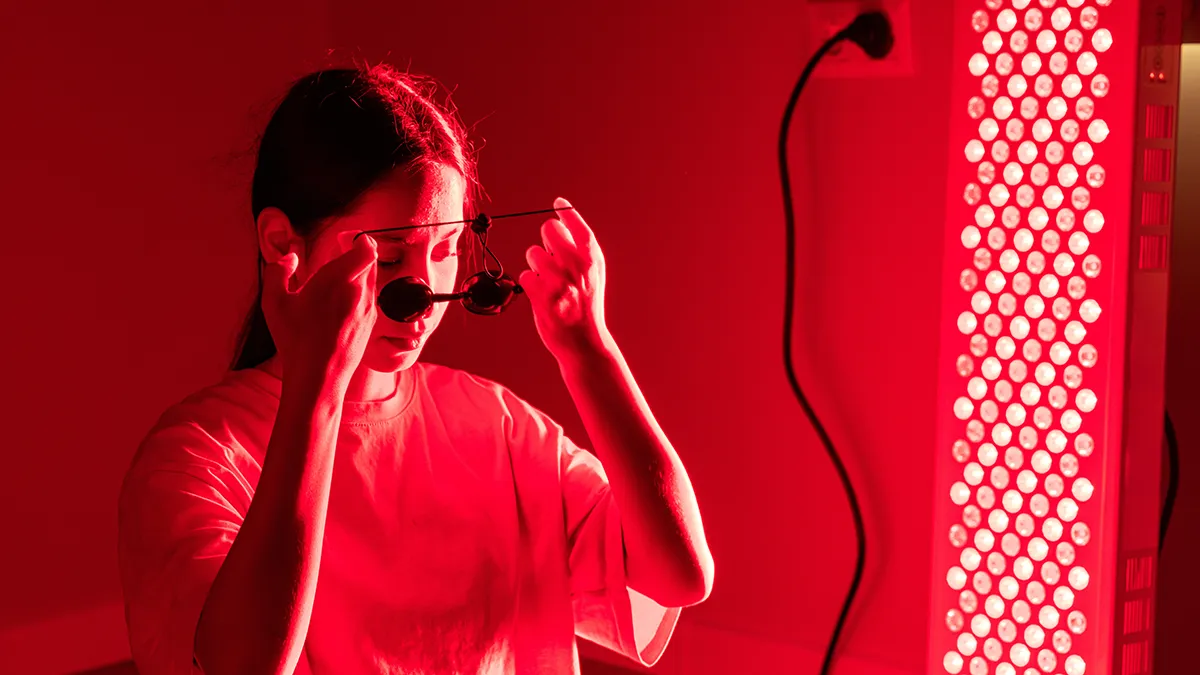
Conclusion
So, at the end of the day, is red light therapy safe? Yes—with common sense and moderation, it’s about as safe and effective as non-invasive wellness interventions get. What started with a Hungarian scientist’s furry lab rats and NASA’s space garden has now settled into our homes as sleek LED masks and red light panels promising skin revival and a cellular pep talk.
Here’s the science: dozens of studies and systematic reviews published by authorities in the field, like the Cleveland Clinic and AAD, confirm that red and near-infrared light do not carry the DNA-damaging risk of UV, do not cause cancer, and in fact may support wound healing, reduce inflammation, and encourage collagen production. Red light therapy side effects are none to very rare when used correctly. The few caveats? Overuse can stress and irritate your skin, photosensitive individuals may react unpredictably, and we still need more long-term studies to fully understand the cumulative effects of long-term use.
It isn’t magic, it isn’t unverified pseudo-science, and it won’t turn you into a glowing superhuman biohacker overnight—but it can give your cells a boost of repair, restore, and renew.
Like most good things in life, it’s less about chasing extremes and more about balance, consistency, and knowing when enough is enough. So follow the instructions, enjoy the therapies, stay curious, stay beautiful, and enjoy living in your gorgeous skin.
Bonus: FAQ™ Collection
You can check out the entire FAQ™ Collection featuring LED light therapy below.
FAQ™ 100 Collection
- FAQ™ 101 RF & Red Light Wand For Face
- FAQ™ 102 RF, EMS & Red Light Anti-aging Wand For Face
- FAQ™ 103 Diamond-adorned RF, EMS & Red Light Wand
FAQ™ 200 Collection
- FAQ™ 201 Silicone LED Face Mask
- FAQ™ 202 Anti-aging Silicone LED Mask
- FAQ™ 211 Red Light Neck & Décolleté Mask
- FAQ™ 221 Anti-aging Red LED Hand Mask
FAQ™ 300 Collection
- FAQ™ 301 LED Hair Strengthening Scalp Massager
- FAQ™ 302 Laser & LED Hair Regrowth Scalp Massager
FAQ™ 400 Collection
- FAQ™ 401 Dual Microcurrent LED Toning Device
- FAQ™ 402 Dual Microcurrent Red LED Toning Device
- FAQ™ 411 Microcurrent Red LED Body Toning Device
FAQ™ LED Light Therapy Panels
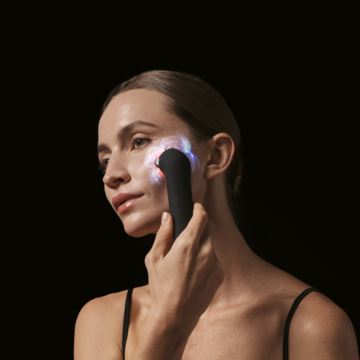

Deja tu comentario